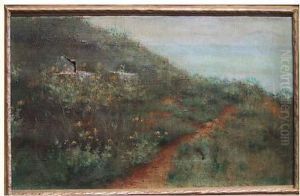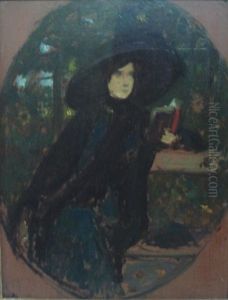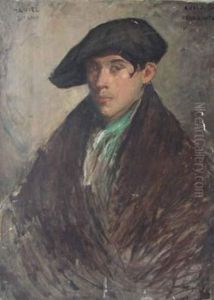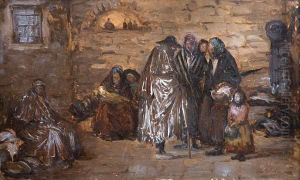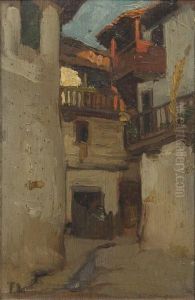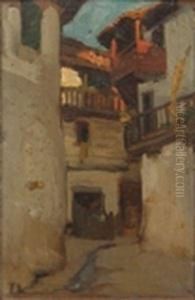Frederic Lauth Paintings
Frederic Lauth, a French artist born in 1861 and died in 1940, was known for his contributions to the art world during a time of significant transition and innovation in European art. His life spanned a period that saw the rise of Impressionism, Post-Impressionism, and the early stages of Modernism. While not as widely recognized as some of his contemporaries, Lauth's work provides a fascinating glimpse into the evolving artistic landscape of late 19th and early 20th century France.
Lauth's early years were marked by traditional academic training, a common starting point for many artists of his generation. He studied at the École des Beaux-Arts in Paris, where he was exposed to the fundamental techniques and classical styles that had dominated European art for centuries. However, like many of his peers, Lauth was drawn to the innovative approaches of the Impressionists, who were beginning to challenge the academic norms with their emphasis on light, color, and everyday subjects.
Throughout his career, Frederic Lauth experimented with these new ideas, though he never fully embraced the more radical aspects of Impressionism or Post-Impressionism. His work often displayed a blend of traditional and contemporary elements, capturing the essence of his subjects with a keen eye for detail and a subtle use of color. Lauth was particularly noted for his landscapes and urban scenes, which reflected a fascination with the natural and built environments and their interplay with light.
Despite his talents, Lauth never achieved the level of fame or recognition enjoyed by some of his contemporaries. His work was, however, appreciated by art collectors and critics of his time, and he participated in several important exhibitions throughout his career. Today, Frederic Lauth's paintings can be found in various art museums and private collections, offering a window into the transitional period of French art at the turn of the 20th century.
Lauth's death in 1940 marked the end of a career that, while not groundbreaking, contributed to the rich tapestry of French art. His legacy lies in his ability to capture the spirit of his time, bridging the gap between the old and the new, and providing a nuanced perspective on the evolution of artistic expression during a pivotal moment in history.
